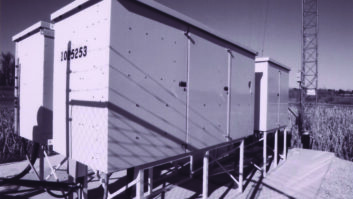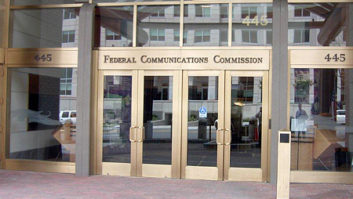Tower Siting and the Environment
Aug 1, 2010 1:00 AM, By Kevin McNamara
The process of developing a new or collocated tower site has changed radically over the past 30 years. Like all things that attract government involvement, the deployment of a tower site is rich in federal, state and local regulations. Much of this is a result of the massive need for mobile telephone carrier towers.
History

When we think of environmental protection issues, the first things that come to mind relate to the quality of our air, water, ecosystems and wildlife. But consider these issues also include historical buildings or neighborhoods, landmarks (structures, roads and burial grounds), protected lands and national parks.
In 1966, Congress passed the National Historic Preservation Act (NHPA) and in 1969 the National Environmental Policy Act (NEPA) was enacted. These laws form the basis of our current broad environmental regulations. The FCC created its own rules and regulations in 1974 as part of the mandate for federal agencies to enforce the NEPA, and amended the rules in 1986, essentially handing most of the approval tasks to state and local governments.
The 1980s was the time when the need for new cell towers began to explode. With much of the regulatory processes handed to the state and local governments combined with the pressure from its citizens, intentional barriers were put up to deter the construction of new towers. The telephone carriers and their representative trade organizations mounted several lawsuits and challenges to these barriers, primarily citing that inability for a particular carrier to provide coverage to a particular area would create an unfair advantage to competing carriers.
Congress later passed the Telecommunications Act of 1996. One small part of the new act permitted the FCC to override decisions of state and local governments in matters of tower siting. The environmentalists were not happy with this and wanted to see specific rules that considered the environmental effect of erecting new structures and adding antennas to existing structures — towers, buildings and other structures.
The NPA
The answer to this was the Nationwide Programmatic Agreement. The actual title is much longer, but this document defines the review policy, with regard to environmental issues, of all new towers built after 1986 and collocated antennas added to existing structures (towers, buildings, smokestacks, etc.). It requires all new structures and collocations to review their impact within these eight categories:
1. Officially designated wilderness areas
2. Officially designated wildlife preserves
3. Situations that may affect listed threatened or endangered species or critical habitats
4. Situations that may affect historical sites listed or eligible for listing in the National Register of Historic Places
5. Indian religious sites
6. 100-year floodplains (as determined by the Federal Emergency Management Agency’s (FEMA) flood insurance rate maps)
7. Situations that may cause significant change in surface features, such as wetland fills, deforestation or water diversion
8. Proposed use of high-intensity white lights in residential neighborhoods
— continued on page 2
Tower Siting and the Environment
Aug 1, 2010 1:00 AM, By Kevin McNamara
Although not specifically listed in the NPA, Section 1.1307(b) requires tower owners to assess RF emissions for compliance. There are some exclusions that can be applied, such as a tower enhancement (rather than a new installation), replacement for an existing tower, construction of a temporary tower or construction of a facility less than 200 feet in overall height above ground level in an existing business area. A tower siting consultant can provide advice in specific situations.
The environmental assessment
The bottom line is that every licensee is required to perform and submit an environmental assessment (EA) when making application for a new structure, an existing structure when adding new antennas or making a major change to an existing installation against the NPA categories. How you perform the evaluation is not specified and could be performed without a professional consultant, however it is recommended you engage an environmental consultant who is familiar with the requirements of the NPA and has the proper experience to perform the study. Section 1.1312 requires a licensee filing an EA to await commission approval of its proposed project before commencing any construction, even if commission approval is not otherwise required for such construction.
Historic preservation offices
As part of the EA, a submission packet must be submitted to both the applicable State Historic Preservation Office (SHPO) and Tribal Historic Preservation Office (THPO) for your state. According to Section 106, you are required to get concurrence from these organizations prior to submitting the EA. My experience is that each state is different in terms of how it operates the SHPO. Some are fully staffed, and some are volunteer staffed. The Indian organizations are even more random. These tribal groups sometimes operate over several states, so it can be difficult to find the appropriate organization to deal with.
According to Section 106, the SHPO/THPO offices are required to provide a decision within 30 days or it can be assumed that concurrence has been provided. You (or your consultant) should keep good communications records of the contacts (or attempted contacts) to these offices as well as documentation that the packages or any requested information were delivered. The FCC has the right to arbitrate any disputes that may arise from a determination of adverse effect.
The FCC’s Tower Construction Notification System (TCNS) can be used to upload the EA and supporting information, where it will be delivered to the proper offices. The system facilitates the Section 106 requirements but not intended to replace normal communications between the offices and the applicant. TCNS can be accessed through the FCC website.
I can’t stress the importance of taking the proper steps to ensure compliance with section 106 before an application is filed. There have been cases where the FCC has ordered structures removed and issued fines due to noncompliance. In addition, the siting portal on the FCC website has a wealth of information that will help in the process.
Online Resources
- NPA
- Environmental checklist for Section 106
- FCC siting portal
McNamara is president of Applied Wireless, Cape Coral, FL.









